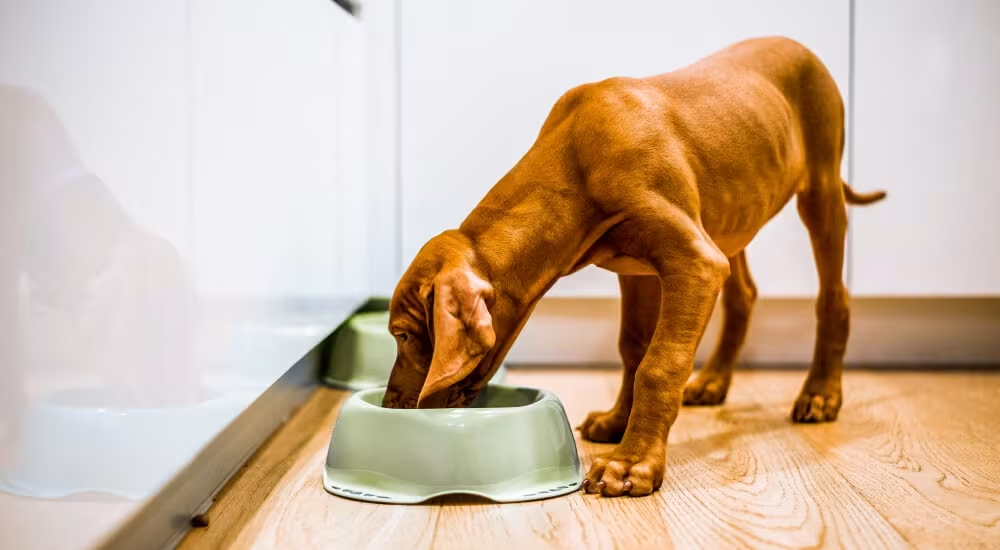How to decide if a raw food diet is best for your dog

Everyone is talking about BARF these days.
No, we don’t mean what happens when your dog ingests the contents of a stuffed toy and his stomach disagrees with the decision.
BARF stands for Biologically Appropriate Raw Food and it’s a dietary option that some pet parents are making, trading in traditional kibble or canned meals for raw meats, bones, and fresh greens. A quality raw dog food diet will typically consist of whole or ground muscle meat (70%), bones (10%), organ meats such as liver and kidney (10%), and fruits and vegetables (10%).
Historically, vets haven't always advocated that pet parents choose a raw diet for their dogs, but opinions are changing thanks to increased availability of pre-packaged, nutritionally complete and safe, frozen raw dog food, that takes the guesswork out of raw feeding.
Many pet parents are asking for info on raw diets, so to get you answers we spoke with our expert nutritionist and team of Animal Care Experts for their take on raw feeding. We also regularly speak with the companies that make the raw meals we carry in our stores about their packaging process to understand handling and food safety protocols. If you’re considering a raw diet for your dog, here’s what you need to know before filling your bestie’s bowl.
All about raw food for pets
Raw feeding was popularized by vet and nutritionist Dr. Ian Billinghurst in the mid-nineties. Billinghurst suggested that some dogs should be fed the diet they were evolved to eat: raw muscle meat, organ meat, and bones, plus some vegetables and fruits.
Essentially, it’s a high protein, moderate fat, low carbohydrate diet based on what dogs’ ancestors (wolves) still eat today.
Pet parents who feed their dogs according to raw principles say it results in leaner (which for dogs means healthier) physiques, healthy skin and coats, dental benefits, and an increase in vitality and energy.
They also say the diet produces less waste because the dog’s digestive system is able to absorb more of this kind of food and use it. Put simply: their poops are smaller.
They also say the diet produces less waste because the dog’s digestive system is able to absorb more of this kind of food and use it. Put simply: their poops are smaller.
“I feel like every day I'm getting at least three to four new people wanting to learn about it,'' says Pet Valu store manager Amanda Lisi. “Even just adding the raw food toppers if they can't do the full raw diet. It's definitely becoming a huge thing.”

How to get your dog eating raw food
When you feed your dog high-quality kibble, or canned wet dog food, you don’t need to worry about that diet being nutritionally complete—they’re designed to be.
The same is true for pre-packaged frozen raw dog food. You can add supplements for your dog’s specific needs, or feed them rotationally, but you don’t have to consider ratios or percentages of fat versus protein versus vitamins and minerals.
If you decide to feed your dog home-prepared raw food, however, you have to make sure their diet is a balanced one. This takes some work, and we do not recommend it—more on that below.
To take the guesswork out of the equation, our stores stock wide selections of pre-packaged frozen raw dog food (or freeze-dried raw dog food), which are already formulated to be a complete, balanced meal. The makeup of your dog’s raw diet can also vary. Whereas the BARF diet is composed of meat (70%), bone (10%), organ (10%), and vegetable (10%), Lisi says some raw diets have slightly different portions—meat (80%), bone and organ (10%), and vegetable (10%). The percentages of each element of the diet depends on your dog’s growth stage and individual needs (some dogs, for example, can’t tolerate a lot of organ meats).
The amount you feed them per day also depends on their developmental stage, their body weight, and their level of activity. It’s really important that you make sure your dog eats well and stays fit .

Is a raw diet safe for your dog and your family?
Commercial dog food is formulated by nutrition experts—whether that’s kibble, wet food, or pre-packaged raw food—which ensures your dog gets everything their body needs.
Home-prepared raw food, on the other hand, can introduce the risk of bacterial infection as raw meat that is bought from a butcher or grocery store is at a higher risk of carrying E. coli and salmonella. The safer alternative is commercially packaged frozen raw dog food, because it is tested for salmonella before it leaves the manufacturer. Meat bought from your butcher isn’t.
The FDA notes that dogs and cats aren’t typically affected by salmonellosis, but salmonella in their stool and saliva can spread to the home where it presents risk to young children, seniors, and people who are immunocompromised. A loving dog kiss, for example, can spread bacteria and pathogens.
Be sure to wash your dog’s food dishes thoroughly and regularly regardless of what you’re feeding them, but this is doubly true for raw food diets.
If you’re not ready to go completely raw, there’s also the option of introducing some raw elements to your dog’s daily menu, so they can access some of the benefits.
“Even if they can't do a full raw diet,” Lisi advises, “there are so many alternatives you can add in just to make and build your dog's bowl a little bit better.”
Alternatives include meal toppers and side dishes, and blends of fruits and veggies, organ meats, and pumpkin purees that can be used to customize a meal. These options are typically freeze-dried, but also available in raw and dehydrated options and they are nutritious ways to complete meals and add health benefits.
Another option is meaty bones and treats that can be fed as a topper or snack. They consist of feet, necks, tails, whole quails, eggs, and meaty bones that come in both raw and freeze-dried options.
For more info on rotational feeding, ensuring your pet has a balanced diet, managing food allergies and more, check out our full guide to feeding your pet.









































